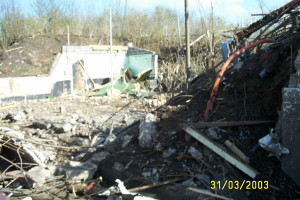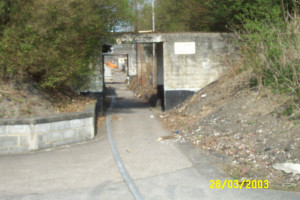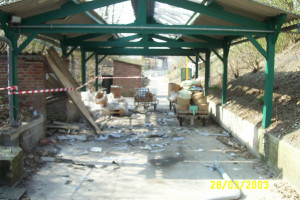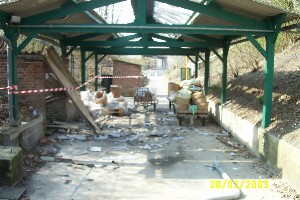A violent explosion, felt more than 10 km away, occurred in a dynamite boxing workshop at an explosives plant. This shop was transforming bulk gelatinous explosives into packaged cartridges. The dynamite manufactured at the time of the accident contained 1/3 nitroglycerin glycol; the other ingredients were ammonium nitrate, barium nitrate, cellulose and nitrocellulose. Boxing operations had been automated. Under normal operating conditions, no one was supposed to be present in the premises or nearby. The machine was fed with paste from the adjacent shop by means of a wire-guided truck crossing the protective bund wall via a tunnel. Machine start-up however required the presence of a qualified technician inside the shop, eventually accompanied by an assistant to perform controls and adjustments. The machine featured a 900 kg/hour production capacity.
At the time of this incident, 580 kg of dynamite were being stored in the shop and machine settings were undergoing adjustment. Uncharacteristically, the shift had begun at 5 am instead of 7 am, and the adjustment phase was lasting slightly longer than usual. Around 6:15 am, the presumed time of the explosion, 4 employees were either in the shop or located nearby: the machine operator, an assistant, a staff member collecting waste, and a mechanic crossing in front of the tunnel. All 4 died in the blast, and 9 others sustained injuries. The internal emergency plan was activated. A thick cloud of black smoke rose into the atmosphere, but the fire following the explosion was very quickly controlled. The safety perimeter set up by first responders was lifted around 10:30 am. The boxing shop was destroyed with craters actually formed. In the adjoining shops, damage was extensive though more limited. The bund walls around the shops had visibly mitigated the effects of this explosion. Property damage was also observed offsite: shattered windows, tiles blown off roofs (up to 550 m). No domino effect ensued.
Judicial and administrative investigations were conducted to determine the underlying cause. 2 hypotheses were forwarded:
1) presence of a foreign substance in the boxing machine hopper, with initiation occurring on one of the hopper’s two worm screws;
2) combination of a heterogeneous mix of (hard) paste with a high local concentration of nitroglycerin glycol, showing sensitivity to mechanical stresses; such stresses generated by the worm screw triggered the explosion.
These investigations also exposed deficiencies in plant organisation as well as attention to safety; substantial safety irregularities were also noted, including: an incomplete validation of the manufacturing process, the lack of a safety analysis relative to modifications, and noncompliance with safety instructions.
Various measures were examined by the operator, e.g. hopper transformations and fewer potential sources of foreign substances. The site was closed in 2006.
On 18th June 2010, the firm was fined €100,000 for a “serious breach of safety duty” by the Lille Criminal Court.
Download the detailed report in .pdf format (461 Kb)










